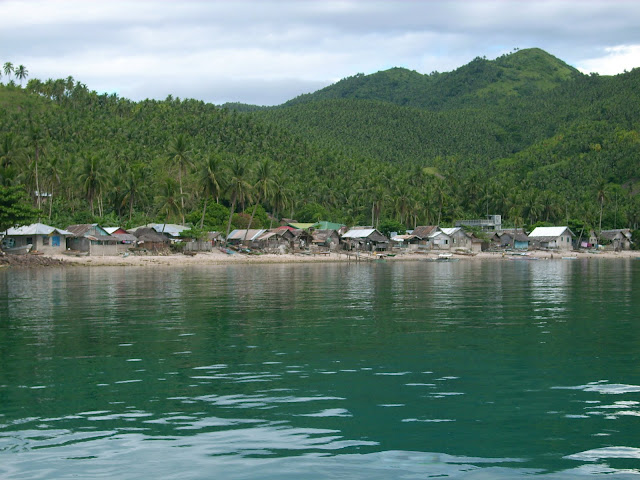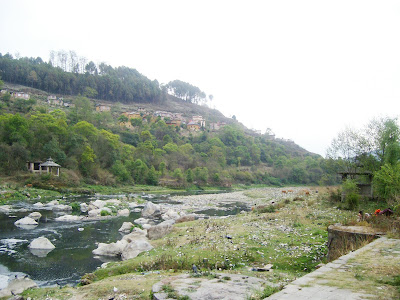I love Easter. My love for this holiday always sneaks up on me – I forget how much I like it until the day comes. It’s not only because Easter gives me an excuse to eat all that chocolate/meat/alcohol that was given up for 40 days prior. It’s more about how hopeful and positive the holiday is. I love how it’s a relatively commercialism-free holiday. Unless the Easter Bunny is involved, Easter is about being with family/friends and celebrating a new beginning. It’s a reason to give a hug to your best friend, sit down for a big, lingering meal, or get dressed up in your finest and go to church with the family.
In the Christian context, Easter is the day that Jesus rose from the dead and saved us from our sins – a reason to celebrate indeed. However, even for those who don’t celebrate the holiday for any of numerous reasons, it can still be a happy day. Easter seems to bring out the good in everyone that I interact with. It makes me smile to see so many messages of goodwill spread out on Facebook, instead of the usual “30 minutes stuck in traffic, f***, I hate my life” type status updates that seem to show up on rainy Mondays. Friends reach out to each other to wish a happy holiday.
Maybe it’s because it feels like spring has finally arrived, could be a feeling of a new start, or perhaps it’s only the lingering sugar high from the huge Reese’s peanut butter egg I devoured on Sunday – but I can’t help but feel a little hopeful right now.
Normally in church, I space out a bit during the homily, like any good Catholic. However, on Easter Sunday, I tuned in to hear what the priest had to say. Surprisingly, I agreed with his main message – that of resurrection, the concept of living forever, and how we shouldn’t wait until the afterlife to live as if each day is a brand new day. How we could imagine a daily resurrection as a reason to start thinking about others, to go beyond our own life concerns and reach out to those who have less than we do. And how each day is a new chance to start living the life we want to live.
His homily got me thinking about the conflicting views of how to achieve that “eternal life” that seems to be the main focus of many. Every religion says a different thing, and few people can actually agree on the subject. As I was pondering, Varanasi kept popping into my head. Varanasi, India, the city that is more than a city – it’s a veritable religious holy ground, where even the air reeks of resurrection and rebirth.
Varanasi
We landed in Varanasi in early April 2009, and our arrival was like a slap in the face. We had just spent 10 days in peaceful Bhutan, then another 7 in the chaotically tranquil Nepal, only to be thrust back into the whirlwind that is India is one short plane ride. We stepped off the plane into sweltering heat and negotiated a taxi into Varanasi and settled back to readjust to the bustle.
On the short taxi ride into town, we drove past a house playing techno Hindi dance music at full blast for no apparent reason, a kid on a bicycle who was carrying what appeared to be the entire front end of a truck and then were stuck in traffic as an entire herd of huge, stinking water buffalo crossed through a major intersection in the center of the city.
 |
| Water buffalo lounging in the Ganges after making their way through the city on the left. A Dhobi Ghat, where laundry is taken care of on the right. |
Once we made it to into the section of Varanasi near the river and its ghats (a set of steps that mark various entryways into sacred rivers in India), finding a hostel was no less chaotic. It was stifling hot, there was an overly persistent tout following us constantly as we lugged our heavy backpacks from guesthouse to guesthouse. The difficult to navigate streets were so narrow that only two people could fit across. Some streets went sharply uphill, other straight down, and the steps in that heat were punishing. We had to weave through people, monkeys, cow dung and actual cows. Several times we had to squeeze past a cow who was taking up 3/4 of the narrow street. As we approached, the cow would look at us, defiant and bored as if saying “what? I was here first and you better not touch me when you go by.”
 |
| Cows wandering through the narrow streets on the left. The main burning ghat, Manikarnika Ghat on the right. |
Until our trip, I usually limited my contact with cows to pouring my milk into my morning cereal, so each time we encountered one, I inched past the cow, terrified by the proximity. I slipped by muttering the mantra “eeeee, don’t kick me, don’t kick me, don’t move! good cow! Eeeee, don’t kick me!”
Since we had arrived to Varanasi late in the afternoon, we had to visit at least 10 hostels of varying sanitary conditions along the length of the river before finding one that had an empty room. We finally found a place near the main burning ghat, Manikarnika. At this point, tired and hungry, I was barely speaking in full sentences to Sergio. We were both soaked with sweat. We literally fell into the room and onto the bed, looked at one another and said, “Welcome back!”
To me, Varanasi was what religion and rebirth look like in city form. The air just feels different there. Walking along the ghats and the river, bodies wrapped in beautiful fabrics were carried past us by several men. There was always a funeral pyre smoldering at a burning ghat close by, cremating someone’s loved one. Elderly people sat in the streets, having made their pilgrimage to Varanasi to spend the last of their days. Wood was stacked as high as buildings in the streets and smoke filled the air.
Varanasi is where people go to die, but it’s also the most sacred place along the Ganges River - the river of life. The entire city shows just how Hindus view life: temporary, fleeting, and a small stop on the re-incarnation train.
The Ganges River is not the fetid, practically radioactive snake of a river that I expected, at least not to the naked eye. However, it is estimated that 200 million liters of untreated human sewage are released into the river every day. The river contains 120 times the amount of fecal coli forms per 100ml than is considered safe before it hits Varanasi, so once it passes through the city, well, it’s really, seriously dirty. But, from our hotel room, the river looked like any other river, and the people bathing and washing their clothes on its banks made it seem like a pure water source.
We spent a sweltering day in Varanasi, walking along the banks of the river. Each ghat we passed was unique and the smoldering heat combined with the hot sun lent a hazy, dreamlike quality to all we were seeing. Indian pilgrims in big groups constantly streamed past us, heading to the temple of their choice.
In our afternoon boat ride on our first day, we couldn’t help but ask our boatman if the water was really safe to drink.
“So, with all respect, is this water safe to drink?” Sergio tentatively asked our boatman.
“Absolutely, no problem, holy water.” Came the confident answer. He said it with a little smirk on his face, obviously thinking, these silly Westerners.
“But… haven’t you heard that the water is polluted?” Sergio and I were nauseous just thinking of drinking the water with dead bodies, saturated in fecal matter, chemicals, and who knows what else.
“Sure, no problem, holy water.” He repeated. “People bring jugs. Fill them while they are here. Keep in houses. Cure all problems. Water last for years. Water to purify”
“Really.” We replied, still not convinced.
“Really, no problem, holy water, Mother Ganga, heals all.” And with that he stopped rowing, dipped his hand in the water and took a long, deep, drink.
That evening, after the sunset, we watched a beautiful worship ceremony from our boat that took place on the banks of the river. Hundreds of boats gathered around to watch the worship, complete with fire, lights, and fireworks. We ended the evening by lighting candles and sending them floating down the river on a banana leaf in memory of deceased loved ones. Our candles slowly began to mingle with the thousands of candles set free by others on the river, and as the flickering lights drifted off into the darkness, I was overcome by how insignificant we all are, but at the same time, how much we need to rely on each other to get through this life.
We took a final boat ride in the early hours of the morning that we left. We passed hundreds of people lining the bank of the river, bathing, washing clothes, drinking in the holy water of the Ganges River. They created a mosaic of colors so bright and vibrant. We then passed a funeral taking place: ashes to ashes, dust to dust. We rowed by two men who had somehow rigged their boat to include a functioning television, watching TV on high volume, as they floated down the river.
We passed by lively kids being washed in the river by their mothers, squirming to get away and laughing. We then rode by the bloated face down body of a child, one of the exceptions to the cremation rule. Certain people, such as untouchables, children and pregnant women aren’t cremated; they are set free down the Ganges River. If they are lucky, they are eaten on the other side or further down the river by dogs, their bones washing up on the banks. Being eaten brings good karma for the next life and is considered to be a very auspicious thing to happen to someone.
In the pinkish and yellowish light from the rising sun, we passed life and death, existing side by side, in a somewhat surreal mesh of colors, sounds, and the fragility of it all.
It seems like a morbid topic for a post that started so positively – but the thing is, Varanasi wasn’t all that morbid. If anything, it showed how we should take part in the happy celebration for as long as we’re here. We’re all inter-connected in a technicolor blur of days, nights and coli form bacteria.
I don’t presume to know the way to eternal life. Whether it’s through confessing my sins to a priest, being eaten by dogs, or living each day as if it were my last, I’m uncertain. The only thing I'm sure of is the way to live life now - following the golden rule of do unto others as you would have them do unto you. Help when I can, give what I've got.
I don’t presume to know the way to eternal life. Whether it’s through confessing my sins to a priest, being eaten by dogs, or living each day as if it were my last, I’m uncertain. The only thing I'm sure of is the way to live life now - following the golden rule of do unto others as you would have them do unto you. Help when I can, give what I've got.
Rebirth, resurrection, reincarnation, everlasting life, burial, cremation, dog food. Who knows? I can discern only one sure thing about these topics:
Today is a new day: another chance for a mini resurrection of my own.
Today is a new day: another chance for a mini resurrection of my own.


















